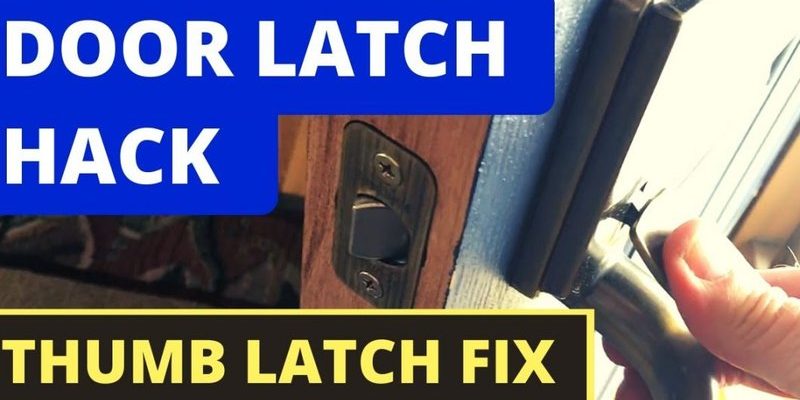
Let’s dive into the common reasons this happens and how you can troubleshoot. Whether you have a simple doorknob latch or a more complex deadbolt lock, your door should stay secure and function smoothly. Think of this as a guide for fixing an annoying hiccup in your home’s security—like giving your door a little TLC.
Understanding How a Door Latch Works
Before jumping into troubleshooting, it’s helpful to know how a door latch operates. At its core, a door latch acts as a mechanism that keeps your door shut. When you turn the handle or knob, the latch bolt retracts, allowing the door to open. Once you release the handle, a spring pushes the bolt back out, securing the door.
If the bolt isn’t extending fully, it might be due to simple mechanical issues. Think of it like a toy that won’t wind up properly. Something might be blocking the gears or the spring might need a little help. Understanding these mechanics can clarify why this problem occurs and help you fix it effectively.
Common Reasons for Bolt Malfunction
There are a few primary culprits when it comes to a door latch bolt not fully extending. Let’s go through them one by one:
- Debris or Dirt: Dirt, dust, or grime can build up around the latch mechanism, preventing it from moving smoothly.
- Misalignment: If your door is misaligned, the latch might not have an easy path to extend into the strike plate.
- Worn Parts: Over time, parts of the latch mechanism can wear out, affecting its ability to function properly.
- Rust or Corrosion: For metal latches, rust can impede movement, making it difficult for the bolt to extend out.
Identifying the source of the problem is key because the solution will vary depending on what you find. So, let’s roll up our sleeves and get into some fixes!
Step-by-Step Troubleshooting Guide
Now that we know what could be wrong, let’s troubleshoot. Here’s a straightforward plan you can follow to diagnose and resolve the issue.
1. Inspect the Latch Mechanism
Start by examining the latch itself. Use a flashlight if necessary to get a good look. Look for any visible debris or dirt that might be hindering movement. Additionally, examine whether any parts appear bent or broken—this could indicate wear and tear. If you see dirt, grab some lubricant spray or a cloth, and wipe the area clean.
2. Check Door Alignment
Next, open and close the door while observing how the latch interacts with the strike plate. Does it line up correctly? If the door seems misaligned, you may need to adjust the hinges. Tightening or loosening the screws can shift the door just enough for the latch to engage properly.
3. Lubricate Moving Parts
If the latch is stuck or feels stiff, applying a gentle lubricant can work wonders. Just a few drops of silicone lubricant should do the trick. Avoid using excessive amounts, as this can attract more dirt over time. Spray or apply it directly to the moving parts, then work the mechanism a few times to help distribute the lubricant evenly.
4. Replace Worn or Damaged Parts
If your latch looks worn out or damaged, replacing it might be the best option. Head to your local hardware store, grab a replacement, and follow the instructions for installation. Most latches come with clear guidelines. If you have a more complex locking mechanism, consulting a professional may be worth considering.
Preventive Measures for Longevity
Now that your door latch is functioning as it should, you might be wondering how to keep it that way. Here are a few tips to ensure your latch remains in top shape:
- Regular Cleaning: Make it a habit to clean the latch area every few months. Even a quick wipe can prevent dirt buildup.
- Proper Lubrication: A light lubricant application every six months can keep things running smoothly.
- Door Maintenance: Check the alignment and hinges regularly to ensure everything is in order.
By incorporating these simple practices, you can avoid future hiccups and keep your door secure.
When to Call a Professional
Sometimes, despite your best efforts, things don’t seem to improve. If you’ve tried everything and the latch still won’t work, it might be time to bring in a pro. A locksmith can provide insights that go beyond basic fixes and identify underlying issues that may not be readily apparent. They can also offer solutions tailored specifically to your door type and brand.
Final Thoughts
Troubleshooting a door latch’s bolt that isn’t fully extending doesn’t have to be a headache. With a little patience and the steps outlined above, you can address common issues and restore functionality. Remember, your door latch plays a critical role in keeping your home secure, so don’t overlook it. Stay proactive, and you’ll enjoy a smoothly operating door for years to come!
